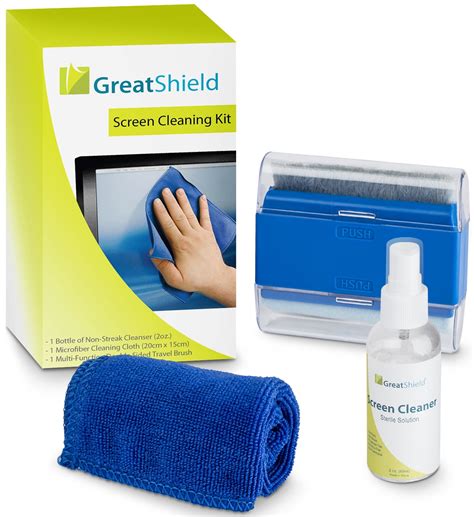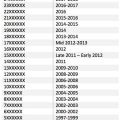The Ultimate Guide to Cleaning Touchscreens
Touchscreens are ubiquitous in our modern lives, from smartphones and tablets to laptops and even cars. They provide a seamless and intuitive way to interact with technology, but with constant use, they can accumulate dirt, fingerprints, and smudges, impacting their clarity and responsiveness. Keeping your touchscreen clean is essential for optimal performance and longevity, and it’s not as daunting as you might think.
This comprehensive guide will delve into the best practices and techniques for cleaning your touchscreen, covering everything from everyday maintenance to tackling stubborn stains. Whether you’re a tech enthusiast or simply looking to keep your devices pristine, this guide has you covered.
What is the Best Way to Clean a Touchscreen?
Cleaning a touchscreen effectively involves a two-pronged approach: using the right cleaning agents and employing the proper technique. Here’s a step-by-step guide to ensure a thorough and safe cleaning process:
- Power Down Your Device: Before you start cleaning, always power off your touchscreen device to avoid any potential damage from static electricity or moisture.
- Gather Your Supplies: You’ll need a few essential items for a safe and effective cleaning:
- Microfiber Cloth: This is your primary cleaning tool. Choose a soft, lint-free microfiber cloth specifically designed for electronics.
- Distilled Water: Distilled water is the most effective and safest cleaning agent for touchscreens, as it is free of impurities and minerals that can damage the surface.
- Isopropyl Alcohol (Optional): If you encounter stubborn stains, a solution of 70% isopropyl alcohol can be helpful. However, use it sparingly and always dilute it with distilled water in a 1:1 ratio.
- Prepare the Cleaning Solution: Dampen your microfiber cloth with distilled water. If using isopropyl alcohol, mix it with distilled water in equal parts and dampen the cloth with the solution. Avoid soaking the cloth, as excessive moisture can seep into the device.
- Gently Wipe the Surface: Use circular motions to clean the touchscreen, applying light pressure. Avoid harsh scrubbing, as it can damage the sensitive surface. Focus on removing dirt, fingerprints, and smudges.
- Dry Thoroughly: After cleaning, immediately dry the touchscreen with a clean, dry microfiber cloth. Ensure there’s no remaining moisture, as this can lead to streaks or attract dust.
Remember, consistency is key. By following these simple steps regularly, you can keep your touchscreen sparkling clean and maintain its optimal performance for years to come.
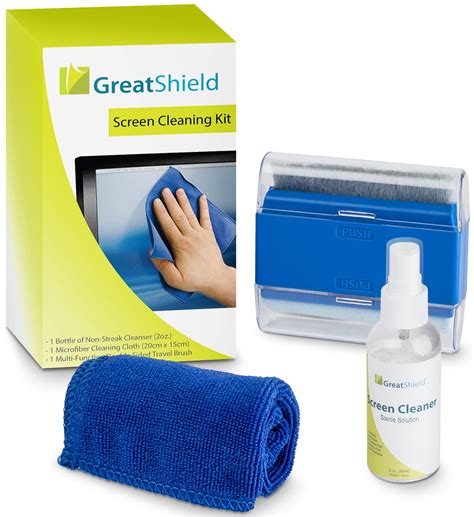
Can I Use Windex or Glass Cleaner on My Touchscreen?
While Windex and other glass cleaners might seem like a convenient option for cleaning touchscreens, they are not recommended. These products often contain harsh chemicals, including ammonia, which can damage the delicate oleophobic coating on touchscreens. This coating repels fingerprints and smudges, ensuring smooth operation and a clear display. Using harsh chemicals can strip away this coating, leaving your touchscreen vulnerable to scratches and fingerprints, ultimately hindering its responsiveness.
Even if a glass cleaner claims to be “safe for electronics,” it’s best to err on the side of caution. The chemicals in these products can still be abrasive, causing micro-scratches on the touchscreen’s surface over time. These scratches can lead to a blurry display and compromise the touch sensitivity.
For the best results and to preserve the longevity of your touchscreen, stick to the recommended cleaning methods using distilled water and microfiber cloths. These gentle methods effectively clean your device without compromising its integrity.
Can I Use a Paper Towel to Clean My Touchscreen?
While it might seem tempting to grab a paper towel for a quick clean, using it on your touchscreen is a recipe for disaster. Paper towels are known for their rough texture and tendency to leave behind lint and fibers. When used on a touchscreen, these fibers can get trapped in the delicate coating, leading to scratches, smudges, and even affecting the touchscreen’s responsiveness. Additionally, paper towels can leave behind tiny particles that can scratch the surface over time.
A microfiber cloth is specifically designed for cleaning sensitive surfaces like touchscreens. Its soft, lint-free fabric effectively lifts dirt and smudges without leaving behind any residue or scratching the surface. Choosing a microfiber cloth ensures a safe and gentle cleaning process, preserving the pristine condition of your touchscreen.
Can I Clean My Touchscreen with a Wet Wipe?
Wet wipes, often used for quick cleaning tasks, are generally not recommended for touchscreens. While some wipes claim to be safe for electronics, they often contain harsh chemicals and fragrances that can damage the delicate coating on touchscreens. These chemicals can strip away the oleophobic coating, leaving the surface vulnerable to fingerprints and scratches.
Additionally, wet wipes can leave behind moisture, which can seep into the device, potentially causing electrical damage. If you absolutely must use a wet wipe, choose one explicitly designed for electronics and ensure it is alcohol-free. Even then, use it sparingly and avoid excessive pressure.
Stick to the tried-and-true method of using a microfiber cloth dampened with distilled water. This gentle approach effectively cleans your touchscreen without any risk of damage.
How Do I Clean a Dirty Touchscreen?
Stubborn stains or grime on your touchscreen can be a nuisance, but they don’t have to be permanent. Here are some methods for tackling those stubborn stains:
- Distilled Water and Microfiber Cloth: As the foundation of touchscreen cleaning, start with a dampened microfiber cloth and gently scrub the stained area in a circular motion. The water’s gentle action can loosen and remove much of the grime.
- Isopropyl Alcohol Solution (Diluted): If distilled water alone doesn’t do the trick, try a diluted solution of 70% isopropyl alcohol. Mix the alcohol with distilled water in a 1:1 ratio and dampen a microfiber cloth. Apply light pressure to the stained area, rubbing gently in a circular motion. Be careful not to soak the cloth, and avoid prolonged contact with the screen.
- Toothbrush (Soft-Bristled): For tough stains that persist, use a soft-bristled toothbrush dipped in the diluted isopropyl alcohol solution. Gently scrub the stain with the toothbrush, being extra cautious around the edges of the screen to avoid damaging the frame.
- Baking Soda Paste: For stubborn stains that resist the above methods, create a paste by mixing baking soda with a few drops of water. Apply the paste to the stain and let it sit for a few minutes. Then, gently scrub the area with a microfiber cloth. Finally, rinse the surface with distilled water and dry it with a clean microfiber cloth.
Remember to test any cleaning method on an inconspicuous area first to ensure it doesn’t damage the touchscreen surface. After cleaning, thoroughly dry the screen to avoid streaks and smudges. By employing these methods cautiously, you can successfully remove even the most stubborn stains.
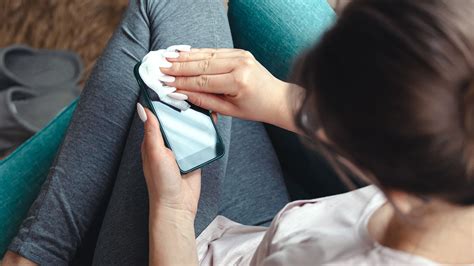
How to Clean Touchscreen on iPad?
Cleaning an iPad touchscreen is no different from cleaning any other touchscreen device. The same principles of using a microfiber cloth dampened with distilled water apply. Avoid using harsh chemicals like ammonia or acetone, as these can damage the oleophobic coating and leave scratches on the surface. Always power down the iPad before cleaning to avoid any potential damage from static electricity or moisture.
If you encounter stubborn stains, a diluted solution of 70% isopropyl alcohol can be used. However, mix it with distilled water in a 1:1 ratio and dampen a microfiber cloth. Apply it sparingly and avoid prolonged contact with the screen. For the best results, follow the steps outlined in the previous sections, ensuring gentle cleaning techniques.
How to Clean a Touchscreen Phone?
Cleaning a touchscreen phone is similar to cleaning an iPad or any other touchscreen device. The fundamental principles remain the same: use a microfiber cloth dampened with distilled water. Avoid harsh chemicals like ammonia or acetone, as they can damage the protective coating on the phone’s screen. Always power down your phone before cleaning.
If you encounter stubborn stains, a diluted solution of 70% isopropyl alcohol can be used. Mix it with distilled water in a 1:1 ratio and dampen a microfiber cloth. Apply it sparingly and avoid prolonged contact with the screen. After cleaning, thoroughly dry the screen to avoid streaks and smudges. Remember to be gentle with the screen, avoiding excessive pressure.
How Often Should I Clean My Touchscreen?
The frequency of cleaning your touchscreen depends on your usage and environment. For individuals who frequently use their devices, daily cleaning is recommended to prevent the accumulation of dirt, fingerprints, and smudges. For those with less frequent usage, cleaning once or twice a week should suffice.
However, it’s always a good idea to wipe down your touchscreen after using it in dusty or oily environments, such as kitchens or workshops. Regular cleaning helps to maintain the touchscreen’s clarity, responsiveness, and overall performance.
How to Clean Touchscreen Laptop?
Cleaning a touchscreen laptop is similar to cleaning any other touchscreen device. The same principles of using a microfiber cloth dampened with distilled water apply. Avoid using harsh chemicals like ammonia or acetone, as these can damage the oleophobic coating on the laptop’s screen.
If you encounter stubborn stains, a diluted solution of 70% isopropyl alcohol can be used. However, mix it with distilled water in a 1:1 ratio and dampen a microfiber cloth. Apply it sparingly and avoid prolonged contact with the screen. For the best results, follow the steps outlined in the previous sections, ensuring gentle cleaning techniques.
How to Clean Touchscreen with Cracks?
Cleaning a touchscreen with cracks requires extra caution to avoid further damage. Avoid using any abrasive cleaners, including harsh chemicals, as they can worsen the cracks and compromise the screen’s structural integrity.
Stick to a microfiber cloth dampened with distilled water. Apply gentle pressure, focusing on cleaning the areas around the cracks. Avoid rubbing or pressing directly on the cracks, as this can spread them further. After cleaning, thoroughly dry the screen with a clean microfiber cloth.
If the cracks are severe, consider seeking professional repair services to avoid further damage. A cracked screen can compromise the touchscreen’s responsiveness and overall performance, making it difficult to use your device effectively.
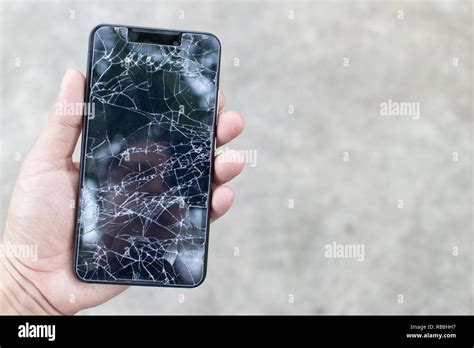
How to Clean a Touchscreen Monitor?
Cleaning a touchscreen monitor is similar to cleaning a touchscreen laptop or any other touchscreen device. The same principles of using a microfiber cloth dampened with distilled water apply. Avoid using harsh chemicals like ammonia or acetone, as these can damage the oleophobic coating on the monitor’s screen. Always power down the monitor before cleaning.
If you encounter stubborn stains, a diluted solution of 70% isopropyl alcohol can be used. However, mix it with distilled water in a 1:1 ratio and dampen a microfiber cloth. Apply it sparingly and avoid prolonged contact with the screen. After cleaning, thoroughly dry the screen to avoid streaks and smudges. Remember to be gentle with the screen, avoiding excessive pressure.
How to Clean Touchscreen Glasses?
Cleaning touchscreen glasses is similar to cleaning any other type of glasses, but with added caution to prevent damaging the touchscreen. You can use a microfiber cloth dampened with distilled water for cleaning. Avoid harsh chemicals, as they can damage the touchscreen’s coating.
If you encounter stubborn stains, you can use a diluted solution of 70% isopropyl alcohol. However, mix it with distilled water in a 1:1 ratio and dampen a microfiber cloth. Apply it sparingly and avoid prolonged contact with the touchscreen. After cleaning, thoroughly dry the glasses with a clean microfiber cloth. Remember to be gentle, avoiding excessive pressure to prevent scratching.
Summary Table of Touchscreen Cleaning Methods
| Cleaning Agent | Recommended Use | Caution |
|---|---|---|
| Distilled Water | Primary cleaning agent for all touchscreens | Avoid excessive moisture |
| Microfiber Cloth | Essential for cleaning all touchscreens, lint-free and gentle | Use only soft, lint-free cloths designed for electronics |
| Isopropyl Alcohol (Diluted) | Used sparingly for stubborn stains, mix with distilled water in a 1:1 ratio | Avoid prolonged contact, test on a small area first |
| Baking Soda Paste | For tough stains, mix baking soda with a few drops of water | Use with caution, test on a small area first |
| Windex or Glass Cleaners | Not recommended for touchscreens, can damage the coating | Contain harsh chemicals that can damage the touchscreen |
| Paper Towels | Not recommended for touchscreens, can leave fibers and scratches | Rough texture and tendency to leave lint and fibers |
| Wet Wipes | Generally not recommended, can contain harsh chemicals and moisture | Avoid unless explicitly designed for electronics and alcohol-free |
FAQ
What is the best way to clean a touchscreen?
The best way to clean a touchscreen is to use a microfiber cloth dampened with distilled water. Avoid harsh chemicals, as they can damage the touchscreen’s protective coating. Always power down your device before cleaning.
Can I use Windex or glass cleaner on my touchscreen?
No, Windex and other glass cleaners are not recommended for touchscreens. They contain harsh chemicals that can damage the oleophobic coating, which repels fingerprints and smudges.
Can I use a paper towel to clean my touchscreen?
No, paper towels are too rough and can leave behind lint and fibers, which can scratch the touchscreen surface.
Can I clean my touchscreen with a wet wipe?
Wet wipes are generally not recommended for touchscreens, as they can contain harsh chemicals and moisture that can damage the device.
How do I clean a dirty touchscreen?
For stubborn stains, you can use a diluted solution of 70% isopropyl alcohol mixed with distilled water. Apply it sparingly and avoid prolonged contact with the screen.
How often should I clean my touchscreen?
The frequency of cleaning depends on your usage and environment. For frequent users, daily cleaning is recommended. For less frequent users, cleaning once or twice a week should suffice.
How to clean a touchscreen with cracks?
Cleaning a cracked touchscreen requires extra caution. Avoid using any abrasive cleaners, including harsh chemicals, as they can worsen the cracks. Stick to a microfiber cloth dampened with distilled water and avoid rubbing or pressing directly on the cracks.

